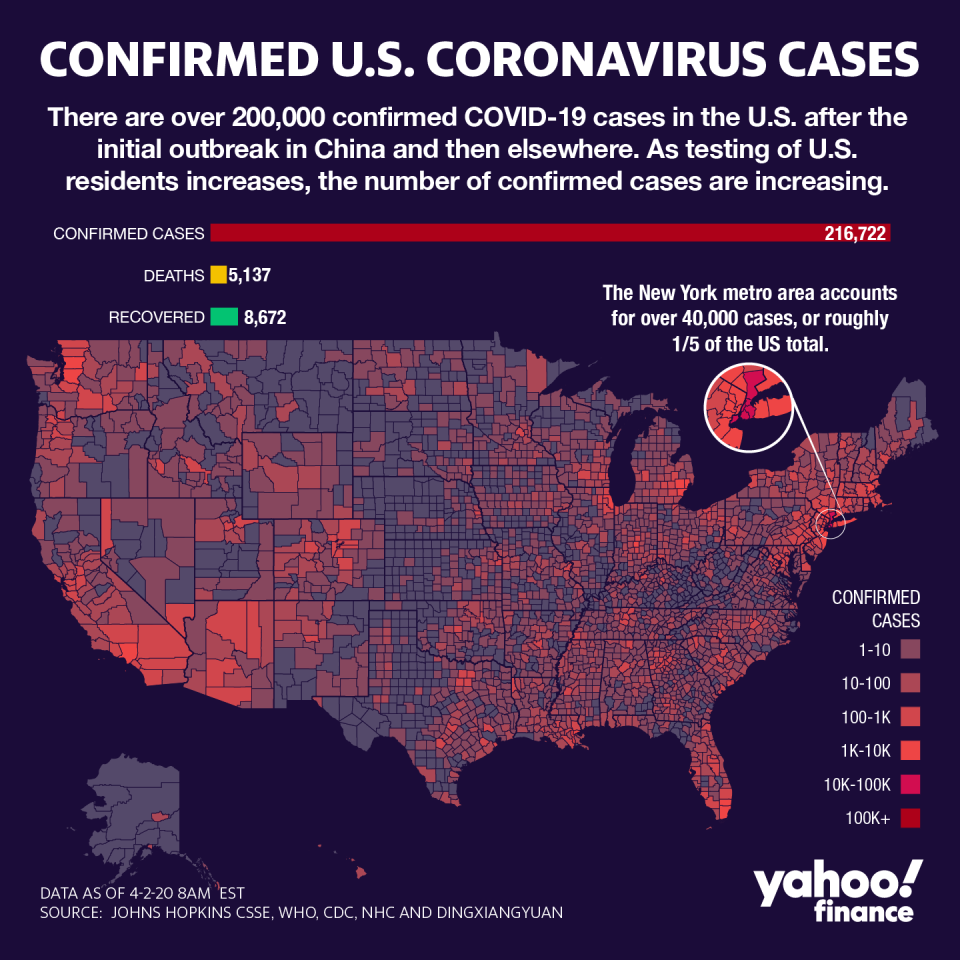Trump is making Bernie Sanders look good
Bernie Sanders was almost in retreat. His rival for the Democratic presidential nomination, Joe Biden, had surged to a commanding lead in the primary elections by mid-March. And after primary votes in 27 states, it was clear Democratic voters were rejecting the government-heavy revolution Sanders is trying to foment.
But President Trump’s slow and standoffish handling of the federal government’s coronavirus response is starting to make some of Sanders’ big-government prescriptions seem timely and perhaps even prudent. Most obvious is Sanders’ “Medicare for all” plan, a giant government health program that would cover everybody and eliminate private insurance. With coronavirus hitting every age bracket and socioeconomic group, it’s likely to expose the many gaping holes in the U.S. health care system and fuel calls for a more thorough government backstop for the uninsured and underinsured.
The $2.2 trillion stimulus bill Congress passed in March contains several provisions to help people pay for coronavirus testing. But they mainly apply to people with insurance, and gaps exist for people who don’t have coverage. States are now allowed to enroll uninsured people in Medicaid, which would cover the cost of testing. But states don’t have to do that. Fifteen states have chosen not to expand Medicaid under the 2010 Affordable Care Act, including heavily populated Texas and Florida. Those states could continue to withhold Medicaid benefits from some uninsured people in their states.
That’s just testing. The stimulus bill doesn’t say much about the costs of treatment for those who develop COVID-19, the illness caused by the virus. A House provision would have forced insurers to cover some coronavirus treatments without cost sharing, and given states the option to cover treatment for the uninsured under Medicaid. But that didn’t make it into the final bill. So people with insurance would be covered under the terms of their plan, with all co-pays and deductibles in effect.

The uninsured don’t have good options if they need treatment for COVID-19. They can look for state or local public health programs that might help with treatment—or just show up at a hospital, which would be required to treat them. This looms as a severe public health problem, though, with more people losing insurance as employers ax millions of jobs. The Economic Policy Institute estimates that 3.5 million newly unemployed workers have already lost insurance, with millions more likely to join that unhappy list.
Opposition to ACA
President Trump has the option to reopen the enrollment period for plans offered under the Affordable Care Act, aka Obamacare, which would give a second chance to people who chose not to enroll in a plan before the start of the year. But Trump has indicated he won’t do that, and is looking for other options instead. Sanders and Democratic front-runner Joe Biden both pounced on Trump’s decision. Sanders called it “insane.” Biden said, “We’re in the middle of a global pandemic, and the Trump Administration is preventing people from getting health care.”
Trump’s opposition to anything involving the ACA is beginning to look completely indefensible. The Trump administration, amazingly, is still party to a Republican-led lawsuit aiming to overturn the entire ACA, which would kill insurance for some 20 million Americans and once again allow insurance companies to deny coverage to people with pre-existing conditions. For his entire presidency, Trump has said he’ll propose something better once Obamacare is gone, but he never has.
Obamacare has flaws. One of the biggest is the high cost of insurance for people who earn too much to qualify for subsidies and don’t get coverage through an employer. But the Democratic candidates have solutions. Sanders’ Medicare for all plan would cover everybody, so there’d no longer be a cost crunch for those above an arbitrary subsidy level. Biden’s “public option” would leave private insurance in place, but eliminate the ACA ceiling for subsidies and offer a new government plan for those can’t find affordable coverage in the private market.
Medicare for all is still way too disruptive and complicated to have a chance of becoming law. But the coronavirus crisis lays clear the need to have universal coverage in the United States, the only advanced nation that leaves millions uninsured. Universal coverage is possible with a mix of government and private plans, similar to what the Biden plan envisions. It would probably require everybody to have insurance, which was part of the ACA until Republicans stripped the penalty for going uncovered in the 2017 tax law. Many young people are now coming down with the coronavirus, revealing the foolishiness of allowing “young invincibles” who think they don’t need insurance to go without coverage.

A heavier government hand
Bernie Sanders also favors a heavier government hand in many areas of the economy, such as energy, transportation, banking and education. Voters seem to have said no thanks, yet Trump’s hands-off, decentralized approach to the coronavirus outbreak has hardly been convincing.
Trump waited weeks after the virus hit U.S. shores to declare an emergency, mobilize federal agencies such as FEMA and use federal powers to harness private sector firms like General Motors and Ford to help address the crisis. Even now, Trump seems reluctant to use the Defense Production Act to produce and distribute desperately needed medical equipment such as ventilators and masks, suggesting that governors need to handle it themselves. It’s evident a faster and more muscular federal response could have eased strains on hospitals in hotspots like New York and perhaps helped limit the virus’s spread.
The bigger beneficiary of Trump’s bumbling may be Biden, rather than Sanders. The coronavirus mess clearly helps make the case for more thorough health care coverage, including a larger government role. But many Americans still distrust big government and don’t want all the new taxes and government overlords Sanders is calling for. Biden supports a more activist government than Barack Obama favored when he was president, yet he still leaves room for free enterprise. That combo could be what ends up defeating the coronavirus, and winning voters in November.
Rick Newman is the author of four books, including “Rebounders: How Winners Pivot from Setback to Success.” Follow him on Twitter: @rickjnewman. Confidential tip line: rickjnewman@yahoo.com. Encrypted communication available. Click here to get Rick’s stories by email.
Read more:
Follow Yahoo Finance on Twitter, Facebook, Instagram, Flipboard, SmartNews, LinkedIn, YouTube, and reddit.



